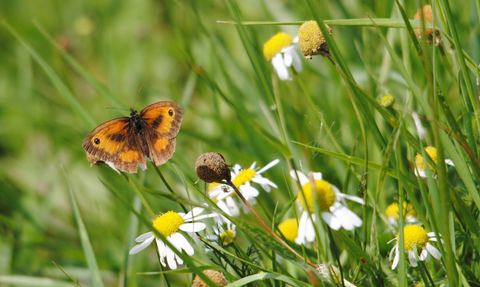
Gatekeeper butterfly (c) Amy Lewis
Where to see summer butterflies
Wildflower meadows are some of the best places to see summer butterflies flittering among the swathes of nectar rich plants. By hedgerows and in sunny woodland glades you'll see a host of different butterflies on the wing. Here's our pick of the best Nature Reserves to spot butterflies this summer.
Birches Farm
The wonderful wildflower meadows at Birches Farm is one of the best places in Herefordshire to see summer butterflies flittering among the swathes of nectar rich plants. The yellow flowering bird’s-foot trefoil is an important foodplant for caterpillars of the common blue, seen in abundance. More recently green hairstreak has made an appearance, a butterfly more usually found in heathlands but whose caterpillars may be feeding on the dyer’s greenweed here. Also seen in good numbers are the comma, large skipper, gatekeeper and marble white butterflies.
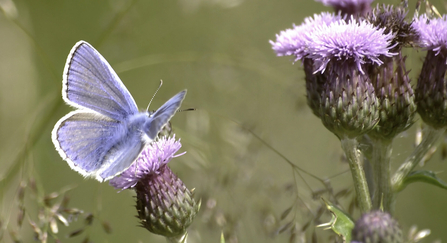
Common blue butterfly (c) Bob Coyle
Queenswood Country Park & Arboretum
Walk along the sunny rides that crisscross the woods and you’ll see speckled wood butterflies dancing in the dappled sunlight along with large number of ringlets and meadow browns in the open glades. The creation of wide rides that let the sunlight through has increased the number and variety of butterflies at Queenswood. The silver-washed fritillary makes a dramatic appearance with their bright orange colouration while the rare purple hairstreak is occasionally spotted in the oak canopies.
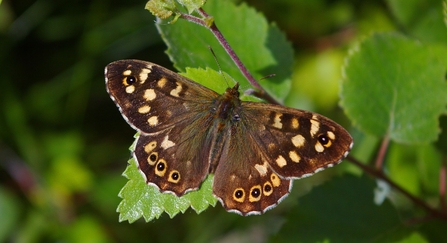
Speckled wood butterfly (c) Neil Aldridge
Common Hill
Over 20 kinds of butterfly have been recorded at Common Hill feeding off the diverse range of lime-loving plants growing here – including marbled white, green and white-letter hairstreak, and pearl-bordered fritillary, as striking as the silver-washed fritillary but smaller and rarer. Common Hill, along with nearby Lea & Pagets Wood nature reserve, is a strong hold of the now rare wood white, one of our daintiest butterfly with a slow, delicate flight.
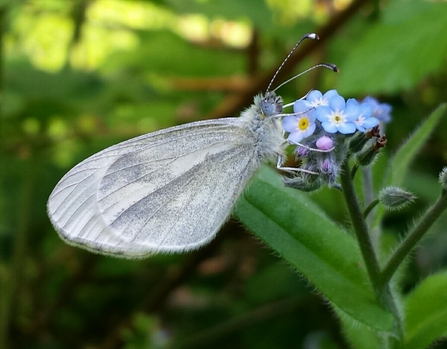
Wood white butterfly
White Rocks
The warm, south-facing limestone grassland and woodland glades are an attractive habitat for a wide range of butterflies including the silver-washed fritillary and the distinctive marbled white, a white butterfly with black-chequered markings seen feeding on purple flowers, such as field scabious, common knapweed and wild marjoram. In contrast, the grizzled skipper has dark brown wings with an intricate, white chequerboard pattern. This one is a fast flier so best observed in the morning as it basks in the sun to warm up.
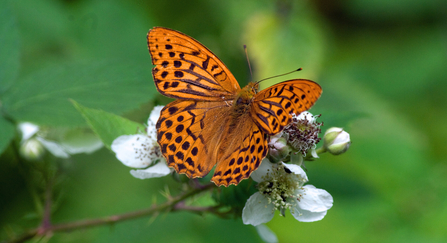
Silver-washed fritillary (c) Don Sutherland
The Parks
Hidden in the Dulas valley, The Parks is a diverse habitat with grassland, woodland and wet areas where the Dulus Brook flows through. The meadow wildflowers are frequented by large numbers of marbled white and meadow brown with the ringlet butterfly found along the woodland edges and on damp grassland by the brook. This dark, sooty to chocolate brown butterfly, with a white fringe along its velvety wings has eyespots on the underside of its wings - three on the forewings and five on the hindwings.
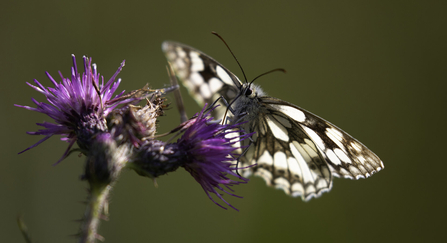
Marbled white butterfly (c) Jon Hawkins
